F1 System architecture
Project leader: Martin Møller, Alexandra
Purpose: To develop network/software-architecture, supporting the described scenarios and their derived demands, scaling general sensor-based surveillance systems to the building industry.
Results: A state-of-the-art network and software architecture of sensors, databases, and interfaces to other systems, implemented in a generic SensoByg framework.
F2 Decision support system
Project leader: Claus V. Nielsen, Danish Technological Institute
Purpose: To develop a general decision support system with a platform that is adjustable to each specific situation. To adjust and implement the general decision support system into the four demonstrations projects.
Results: A general decision support system on a platform based on input from the wireless sensors systems and output from e.g. GSM-telephones, logistics- and management systems. Adjustment and implementation in the four demonstrations projects.
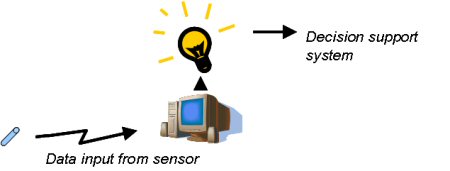
F3 Encapsulation and embedment
Project leader: Henrik E. Sørensen, Danish Technological Institute
Purpose: To develop a number of methods for encapsulation and embedment of sensors in building materials, buildings, and large constructions both during the production phase and by subsequent installation. To determine where and how the sensors should be placed in order to be able to obtain the desired information. To minimize the number of sensor-defects during the service period.
Results: Documentation of the feasibility of encapsulation principles in concrete, Suggestions as to where and how many sensors must be embedded in connection with the determination of maturity and relative humidity.
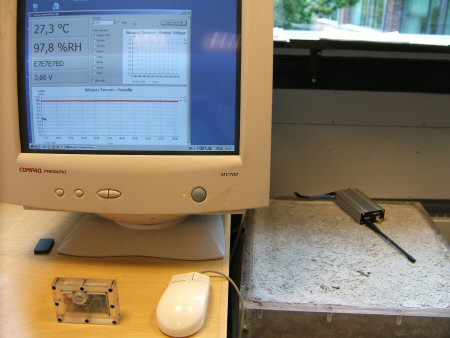
F4 Wireless sensor
Project leader: Lars Lading, Danish Technological Institute
Purpose: To develop and implement sensors that can be embedded and make wireless transmission of sensor signals possible.
Results: Demonstration of embedded moisture and temperature sensors. Methods to analyze performance and synthesize sensors based on demands concerning sensitivity, response time, and passive (without batteries) replacement range.
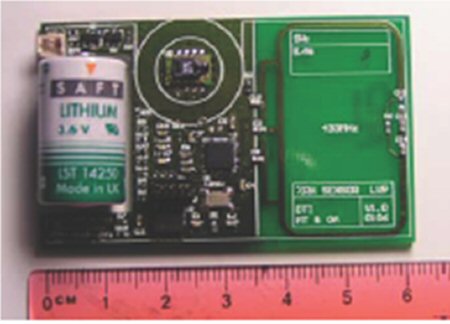
F5 Coupling and interaction
Project leader: Lars Lading, Danish Technological Institute
Purpose: To investigate wave propagation and interaction in order to identify frequency ranges and node structure. This will ensure reliable communication, consideríng of the properties of the structures the sensors are placed in.
Results: Model for wave propagation e.g. in reinforced concrete structures, considering diffraction, reflection, and damping. Development of special antennas based on artificial micro structuring. Specification of coupling efficiency for selected systems in relation to given systems parameters. Accounting for dynamic work distribution between nodes.
D1 Moisture in housings – new and existing 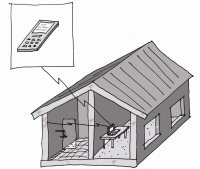
Project leader: Claus Reinhold, Danish Building Research Institute, Aalborg University
Purpose: To develop and demonstrate advantages of a surveillance system based on passive, wireless sensors that are able to register the moisture content in housings and notify when inappropriate conditions arise, e.g. increased risk of mould and fungi.
Results: The project will develop and demonstrate the use of new inexpensive systems for surveillance of moisture in housings.
D2 Large structures
Project leader: Asger Knudsen, Rambøll A/S
Purpose: Using the wireless sensors to establish simple and efficient surveillance of moisture penetration in large structures with heavy moisture loads. This to enable optimal planning of service and maintenance from a technical, economical, and traffic load point of view.
Results: Sensor-based proto type solutions for measuring moisture penetration under membranes in concrete bridges, under unprotected concrete tested in full scale, and the use of a decision support system for processing sensor data and transmission of relevant observations to a management system. Full scale testing will be carried out on the Danish Road Directorate bridges and sought implemented in the new Femern Bælt link.
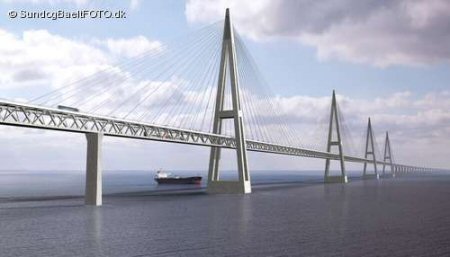
D3 Maturity of concrete elements
Project leader: Claus Pade, Danish Technological Institute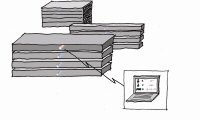 Purpose: To develop a surveillance system based on wireless technology, that is able to record temperature in concrete elements, in connection with their production. This should in turn enable determination of maturity of the elements automatically. The surveillance of maturity will be sought combined with RFID-technology in order to provide each element with a unique identification.
Purpose: To develop a surveillance system based on wireless technology, that is able to record temperature in concrete elements, in connection with their production. This should in turn enable determination of maturity of the elements automatically. The surveillance of maturity will be sought combined with RFID-technology in order to provide each element with a unique identification.
Results: Sensor based proto type solutions for measuring maturity of concrete elements, tested in full scale, as well as the use of unique identification numbers for storage management.
D4 Moisture in the construction phase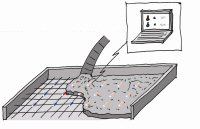 Project leader: Claus V. Nielsen, Danish Technological Institute
Project leader: Claus V. Nielsen, Danish Technological Institute
Purpose: To develop a surveillance system based on inexpensive, passive, and wireless moisture sensors, that can be used e.g. when casting a concrete floor as well as subsequent installation.
Results: A wireless concept for recording moisture on the construction site. The development of a decision support system to be used by contractors and during inspection. Methods for embedding and subsequent installation.
SensoByg Framework
Project leader: Martin Møller, Alexandra
Purpose: To gather and coordinate results from the five research projects and the four demonstration projects and to develop a business model for commercialization of the developed technology in the building industry and other related businesses. The results are gathered in a generic frame work for future applications.
Results: SensoByg framework with generic results and a concept for future applications. Business model for commercialization of the developed technologies.
